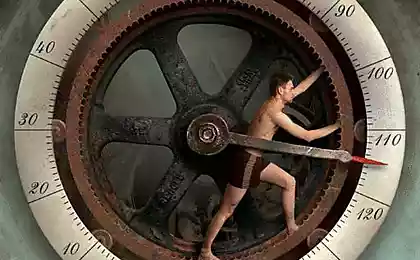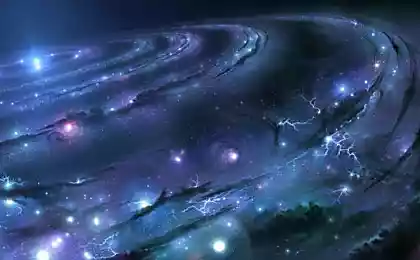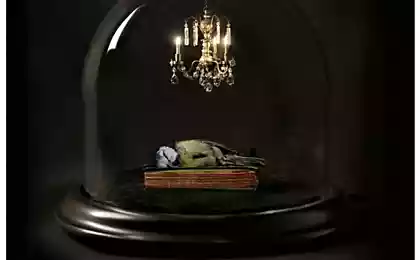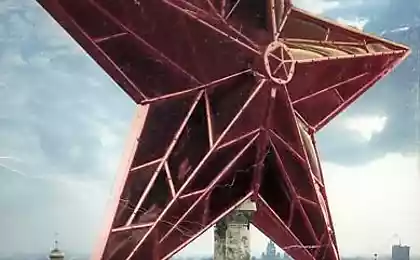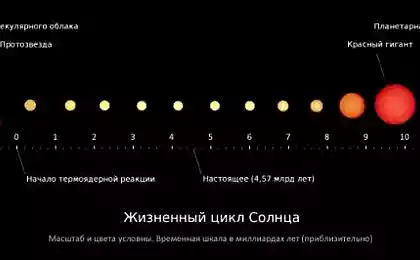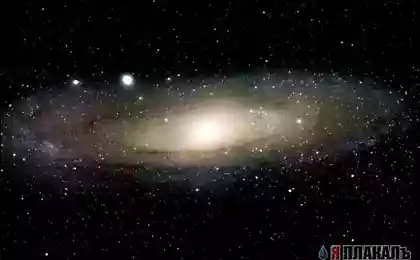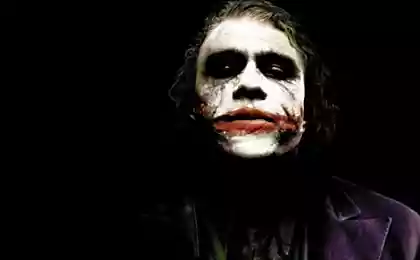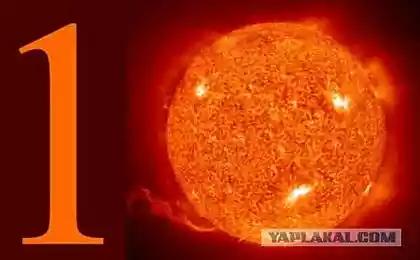626
Birth and death of stars in the galaxy Andromeda
Andromeda appears to the naked eye spots of light in the night sky. But by joining forces space observatories "Hershel" and XMM-Newton, managed to get a picture of our nearest neighbor in a whole new light. "Herschel" seen in the infrared ring of star formation and the XMM-Newton X-rays picked up by dying stars.
The Andromeda Galaxy, M31, or almost twice as much of the Milky Way, but in many ways it is similar. Both are home to hundreds of billions of stars. Currently, M31 lies about 2, 2 million light years away, but the distance is reduced to a rate of 500 000 km / h. Neighbors will clash. After about 3 billion years, the two galaxies collide and then for 1 billion years after the intricate dance of gravity, will merge into a single elliptical galaxy.
During the Christmas holidays the two observatories ESA cameras were aimed at Andromeda. Let's look at these photos.
link
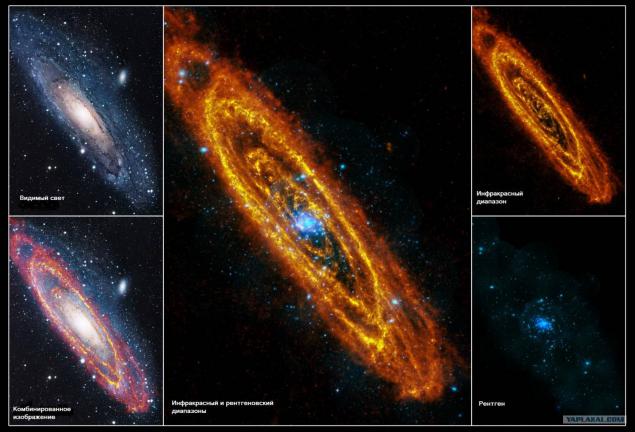
Sensitivity to radiation far infrared "Herschel" sees clouds of cold gas and dust inside of which is a lot of dust cocoons containing forming stars, each of which is gradually sealed over a long gravitational process stretched for hundreds of millions of years. Once a star reaches a sufficiently high level of density, it begins to shine in visible light. That is, leaving his cradle, the star becomes visible to ordinary telescopes.
Many galaxies are spiral, but Andromeda is interesting for its dust ring 75 000 years across, covering her center. Some astronomers believe that it could be formed as a result of a recent collision with another galaxy. The picture "Herschel" finds at least another five concentric rings of cosmic dust.
Type in the far infrared region of the "Herschel»:
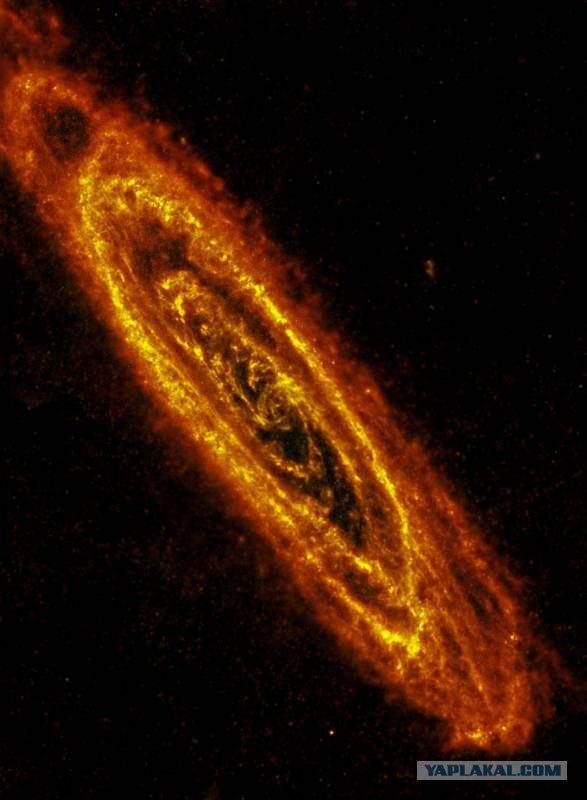
This infrared image superimposed on a picture of the Andromeda in X-rays, made almost at the same observatory, ESA's XMM-Newton. While frames are visible at infrared born stars, X-rays usually show the final stage of stellar evolution.
XMM-Newton highlights hundreds of X-ray sources within Andromeda, many of which are clustered around the center of the galaxy where stars are always arranged more densely. Some of the sources are shock waves and matter from the remnants of exploded stars, the other - a pair of stars that are connected in a gravitational fight to the death. These deadly embrace one star has already died and pulls gas from its companion still living. Passing through space, the gas heats up and emits X-rays. Live star will eventually be completely exhausted efforts of his partner denser, and wrapped the stolen gas "corpse" in the end explode.
Both images provide information that can not be obtained with ground-based telescopes as well as infrared and X-rays are absorbed by Earth's atmosphere. Visible light reveals only adult stars, while in the infrared you can see the newborn, and the X-ray - the dying light.
The next picture shows the X-ray radiation in the Andromeda as it sees XMM-Newton:
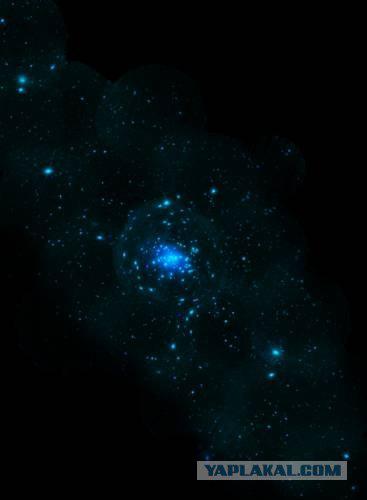
Source:
The Andromeda Galaxy, M31, or almost twice as much of the Milky Way, but in many ways it is similar. Both are home to hundreds of billions of stars. Currently, M31 lies about 2, 2 million light years away, but the distance is reduced to a rate of 500 000 km / h. Neighbors will clash. After about 3 billion years, the two galaxies collide and then for 1 billion years after the intricate dance of gravity, will merge into a single elliptical galaxy.
During the Christmas holidays the two observatories ESA cameras were aimed at Andromeda. Let's look at these photos.
link

Sensitivity to radiation far infrared "Herschel" sees clouds of cold gas and dust inside of which is a lot of dust cocoons containing forming stars, each of which is gradually sealed over a long gravitational process stretched for hundreds of millions of years. Once a star reaches a sufficiently high level of density, it begins to shine in visible light. That is, leaving his cradle, the star becomes visible to ordinary telescopes.
Many galaxies are spiral, but Andromeda is interesting for its dust ring 75 000 years across, covering her center. Some astronomers believe that it could be formed as a result of a recent collision with another galaxy. The picture "Herschel" finds at least another five concentric rings of cosmic dust.
Type in the far infrared region of the "Herschel»:

This infrared image superimposed on a picture of the Andromeda in X-rays, made almost at the same observatory, ESA's XMM-Newton. While frames are visible at infrared born stars, X-rays usually show the final stage of stellar evolution.
XMM-Newton highlights hundreds of X-ray sources within Andromeda, many of which are clustered around the center of the galaxy where stars are always arranged more densely. Some of the sources are shock waves and matter from the remnants of exploded stars, the other - a pair of stars that are connected in a gravitational fight to the death. These deadly embrace one star has already died and pulls gas from its companion still living. Passing through space, the gas heats up and emits X-rays. Live star will eventually be completely exhausted efforts of his partner denser, and wrapped the stolen gas "corpse" in the end explode.
Both images provide information that can not be obtained with ground-based telescopes as well as infrared and X-rays are absorbed by Earth's atmosphere. Visible light reveals only adult stars, while in the infrared you can see the newborn, and the X-ray - the dying light.
The next picture shows the X-ray radiation in the Andromeda as it sees XMM-Newton:

Source:





